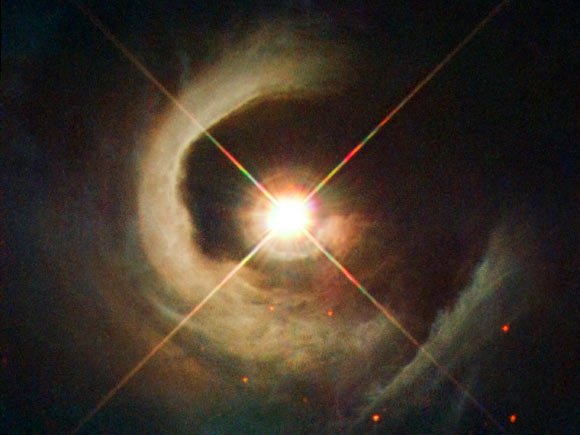Astronomers using NASA’s Hubble Space Telescope have captured a striking image of a young variable star known as V1331 Cyg and its dusty environment.

This image from Hubble shows the T Tauri variable star V1331 Cyg. Image credit: ESA / Hubble / NASA / Karl Stapelfeldt, GSFC / B. Stecklum & A. Choudhary, Thüringer Landessternwarte Tautenburg.
V1331 Cyg lies in the constellation Cygnus and is approximately 1,800 light-years away from Earth.
The star has two rings of dust and seems to be associated with the dark cloud Lynds 981, which is usually described as a roughly elliptical core with five elongated dark filaments.
It belongs to the group of T Tauri stars – very young (less than 10 million years old) variable stars which show both periodic and random fluctuations in their brightnesses.
What makes this star special is the fact that astronomers look almost exactly at one of its poles.
Usually, the view of a young star is obscured by the dust from the circumstellar disc and the envelope that surround it.
However, with V1331Cyg astronomers are actually looking in the exact direction of a jet driven by the star that is clearing the dust and giving us this magnificent view.
This view provides an almost undisturbed view of the star and its immediate surroundings allowing astronomers to study it in greater detail and look for features that might suggest the formation of a very low-mass object in the outer circumstellar disc.







